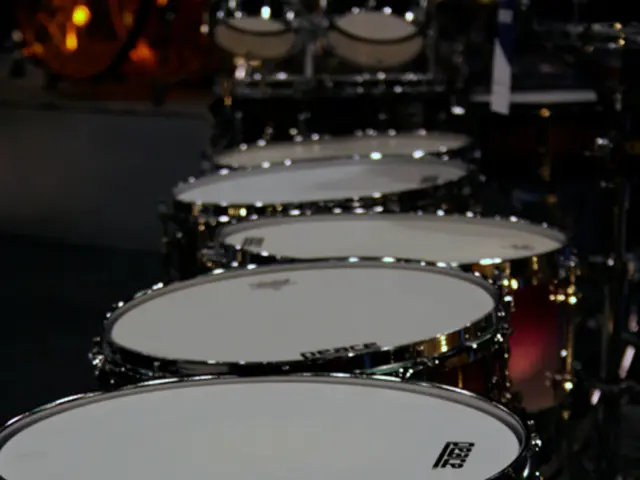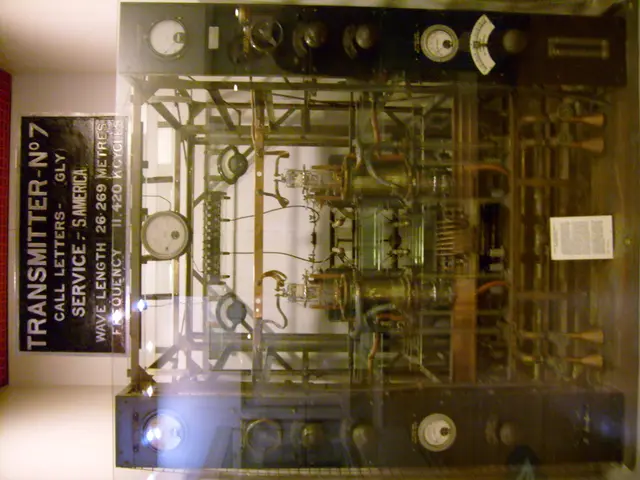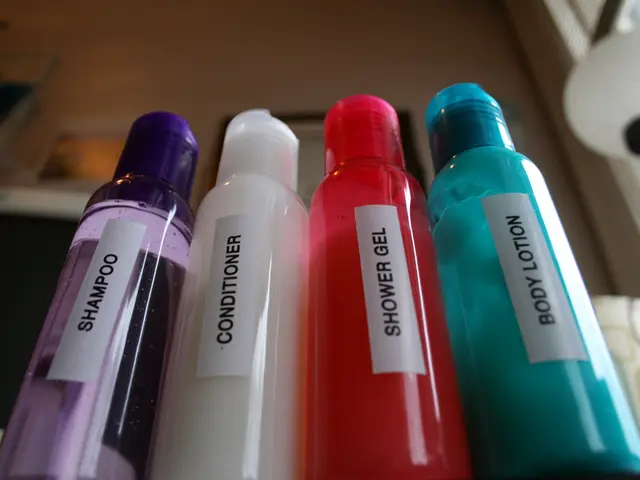Engaging in simple creative pursuits maintains cognitive vitality and brain health, according to neuroscientific findings.
Dabbling in artsy activities like drawing, painting, and gardening might seem like a fun pastime, but science suggests they have a powerful impact on maintaining brain health.
These activities stimulate neuroplasticity, the brain's ability to form new connections and adapt as we age, crucial for cognitive function as we get older.
Creative Pursuits and Brain Health
Research, like one in Neurology, found that engaging in artistic activities in middle and old age can slash the risk of mild cognitive impairment (MCI), a precursor to dementia, by 73%. Crafty tasks, like sewing, showed a 45% reduction.
Why are these activities so important? They stir multiple brain regions, enhancing communication between them and boosting neurotransmitters like dopamine and serotonin, which improve mood and motivation.
Get Creative, Boost Brain Power
So, how can you get in on the action? Start simple with activities you enjoy, such as journaling or gardening, making them a regular part of your routine. You don't need special skills to reap the benefits - just find what you like and stick with it.
Local community centers or online platforms like Meetup can help you find groups to join. Embrace your inner artist and watch your brain thrive!
A Deeper Dive: The Science behind Creative Activities
This section dives deeper into how simple creative activities contribute to brain health, drawing from extensive research and neuroscience insights.
The analysis delves into definitions, scientific mechanisms, specific examples, and practical implementation, providing a comprehensive understanding for readers intrigued by maintaining cognitive vitality.
Defining Simple Creative Activities
Simple creative activities are accessible hobbies that encourage artistic expression without requiring extensive training. Examples include drawing, painting, writing, playing a musical instrument, gardening, cooking, knitting, or woodworking. These activities are not only enjoyable but have profound effects on brain health, catering to individuals of all ages and backgrounds.
Research from sources like Healthline and Medical News Today highlights that such activities engage the brain in new ways, potentially improving memory, cognition, and creativity.
A 2015 study published in Neurology, specifically noted that elderly individuals engaging in artistic activities were 73% less likely to develop mild cognitive impairment (MCI), a condition often preceding dementia, while craft activities reduced this risk by 45% (Neurology study).
The Neuroscience of Creativity
From a neuroscience perspective, creative activities stimulate neuroplasticity, the brain's ability to form new neural connections throughout life. This process involves adaptive structural and functional changes in response to stimuli (StatPearls).
Activities like painting activate the visual cortex for color and shape processing, the motor cortex for fine motor movements, and the prefrontal cortex for planning and creative thinking. This coordinated effort enhances communication and integration between brain areas, essential for overall function.
Additionally, these activities boost neurotransmitters like dopamine and serotonin, improving mood and mental well-being, vital for brain health (Verywell Mind).
Research also implies increased activity in the brain's default mode network during creative tasks, associated with mind-wandering and creative thinking. This network is responsible for sudden, unguided connections, perfect for spurring creativity.
Furthermore, creative activities can balance brain hemispheres, with the left linked to logic and the right to creativity, enhancing integrated thinking.
Breaking Common Myths
Many people believe that only complex mental exercises, like learning a new language or solving puzzles, can keep the brain sharp. However, research challenges this, suggesting simple creative activities can be equally, if not more, effective.
A 2023 study in BMC Geriatrics found older adults without cognitive impairment performed similarly to younger adults in creativity tasks, indicating creativity doesn't diminish with age and can maintain cognitive abilities (BMC Geriatrics study).
Simple activities are sustainable and enjoyable, increasing adherence compared to complex tasks. They're particularly beneficial for older adults or those with limited mobility, requiring minimal physical effort or equipment, extending public health reach.
This is supported by findings from Everyday Health, which notes creative hobbies like woodworking reduce dementia risk, making them vital for brain health maintenance.
Varied Creative Activities and Their Benefits
Below, we detail specific simple creative activities and their neurological benefits:
| Activity | Benefits ||---------------------------------|---------------------------------------------------------------------------------------------------------------------------------------------------------------|| Drawing | Activates the default mode network, linked to neuroplasticity (Healthline, 2011) || Painting | Engages the cerebellum, essential for fine motor coordination (The Brain Charity) || Gardening | Boosts neurotransmitters like serotonin, improving mood and well-being (Verywell Mind) || Origami | Enhances concentration and problem-solving skills (BrainWise) || Knitting | Boosts cognitive flexibility, critical for adaptive thinking (BrainWise) || Creative Writing | Improves episodic memory, the ability to remember past events (BrainWise) |
Implementation and Getting Started
To make creative activities a part of your life:
- Start small, with short sessions, gradually increasing time as you gain comfort.
- Make it a habit by setting specific times daily or weekly.
- Seek support through local classes or online platforms like Meetup for community engagement.
- Experiment with different activities to find what resonates.
- Resources include community centers, libraries, online tutorials, and art-making books.
Conclusion
In summary, simple creative activities are potent tools for maintaining brain health, promoting neuroplasticity, boosting cognitive function, and reducing cognitive decline risk.
By incorporating these activities into daily life, individuals can ensure optimal brain function as they age, making creativity an essential component of lifelong health strategies.
This aligns with findings from organizations like the Alzheimer's Association, emphasizing active mind engagement for brain health. This analysis draws from a broad range of studies and articles, ensuring a comprehensive understanding of how neuroscience supports the role of simple creative activities in brain health maintenance, accessible and beneficial for all.
References:
- Leisure activities and the risk of mild cognitive impairment in the elderly
- Creative abilities in later life: predictors and relations with dementia and depression
- Brain exercises: 13 ways to boost memory, focus, and mental skills
- Brain exercises to improve memory, cognition, and creativity
- 10 memory-boosting games and activities to keep your brain sharp
- 12 ways to keep your brain young - Harvard Health
- Tips to keep your brain healthy - Mayo Clinic Health System
- The incredible ways creativity can improve brain health - The Brain Charity
- 10 activities to keep your brain healthy | North Central Surgical Center
- Physical Activity Boosts Brain Health | Physical Activity | CDC
- How You Can Strengthen Your Brain With Exercises
- 10 Healthy Habits for Your Brain | Alzheimer's Association
- Engaging in various creative activities like painting, drawing, gardening, origami, knitting, and creative writing not only enrich our personal lives but also contribute to maintaining overall cognitive health and mental well-being.
- In addition to stimulating neuroplasticity, these activities foster enhanced communication between brain regions, boost neurotransmitters such as dopamine and serotonin, and potentially improve memory, cognition, and creativity.







